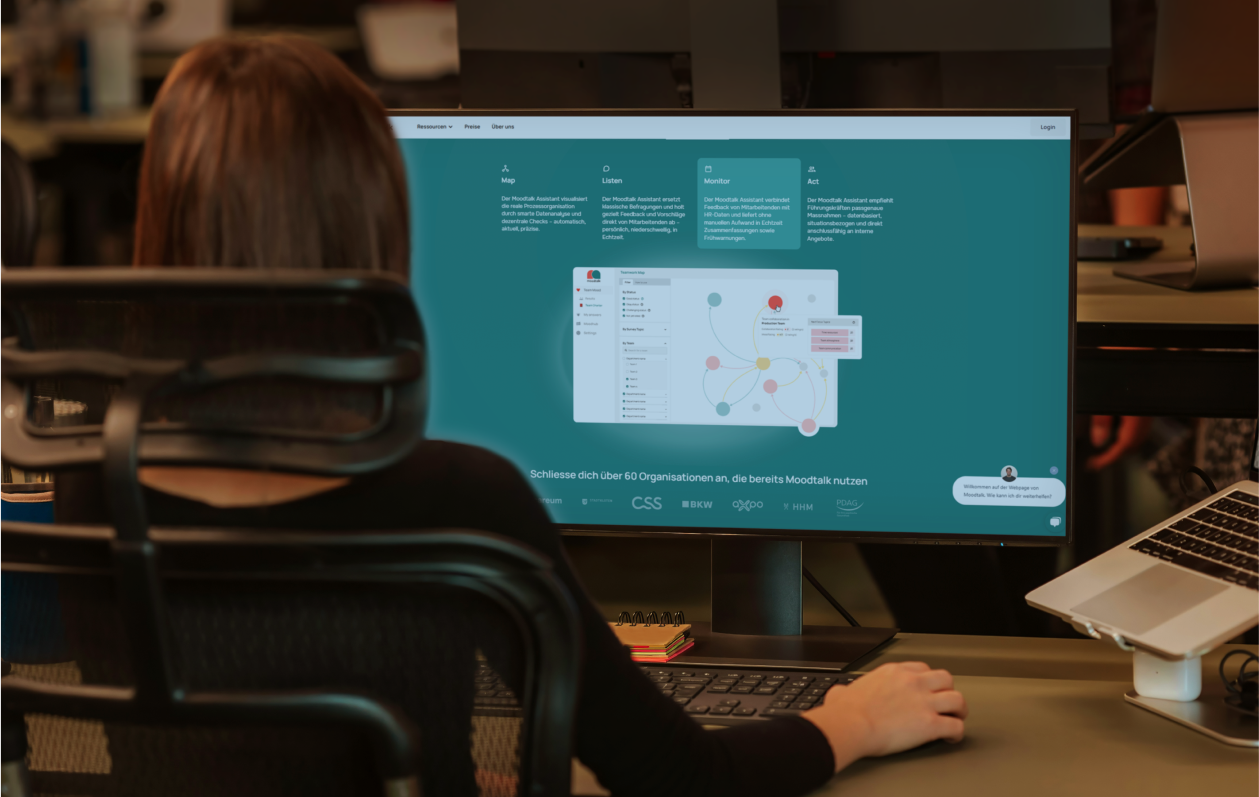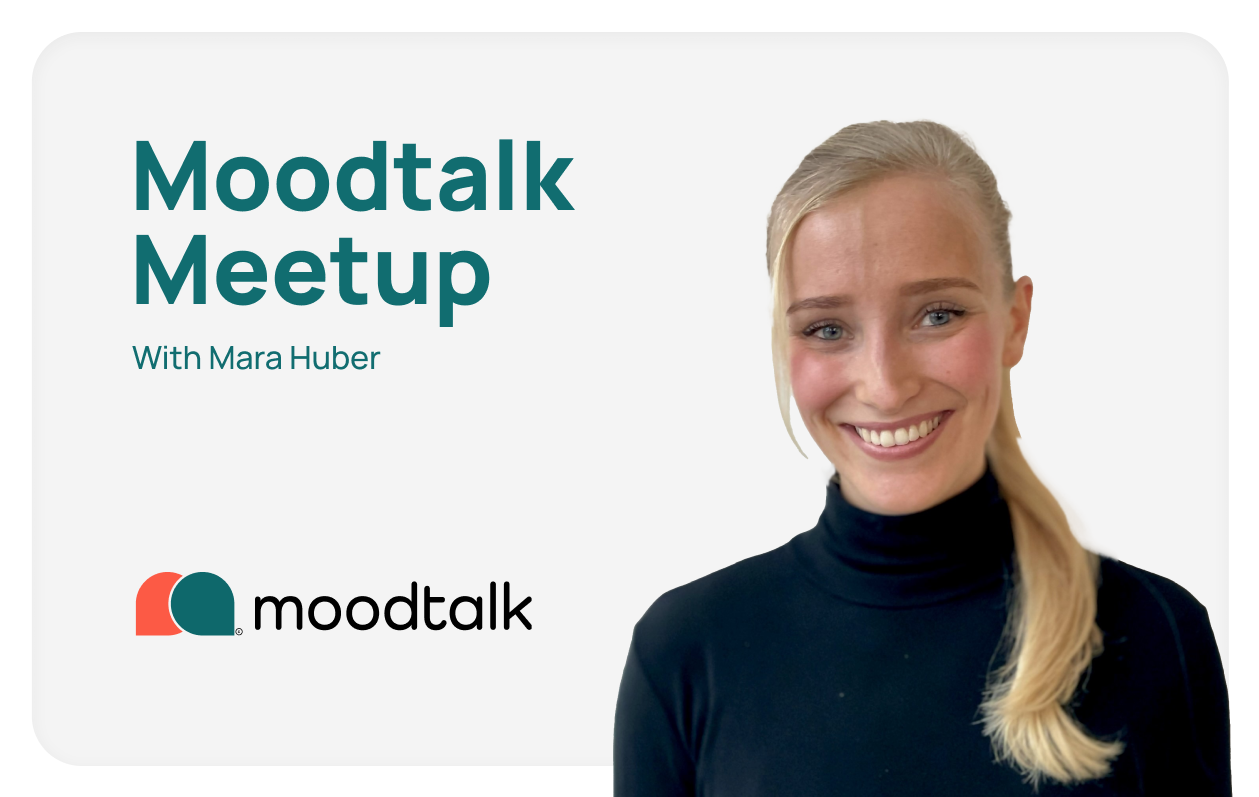Our first Moodtalk Meetup was an inspiring online session on the topic “The Art of Good Questions.” Together, we explored why questions form the foundation of a successful Moodtalk and how we can improve the quality of our talks through purposeful questioning.
Why Are Good Questions Crucial?
A team talk thrives when all participants actively contribute and diverse perspectives come to light. This doesn’t happen by itself—it requires carefully crafted questions that provoke thought.
While closed questions can only be answered with “yes” or “no,” open questions create space for reflection, new ideas, and deeper insights. They help shift the focus from problem-solving to solution-finding and enable constructive exchange within the team.
A good talk always begins with the right question!
How to Formulate Strong Open Questions
For a talk to reach its full potential, questions should:
- Encourage Reflection: Instead of “Was the meeting helpful?” ask “What helped you most during the meeting, and what could be improved?”
- Address Concrete Experiences: “When did we work particularly well as a team? What contributed to that?”
- Be Solution-Oriented: “How can we make our meetings more effective so that everyone feels involved?”
- Allow Space for Different Perspectives: “Which situations show us that we stick together as a team?”
W-questions (What, How, When, Why, For what purpose) are especially useful, as they encourage more detailed answers.
From Problem to Solution – Finding the Right Balance
A key challenge is striking the balance between questions that are too vague and those that are overly detailed. Especially on sensitive topics—like communication, agreements, or conflict resolution—the way a question is phrased determines whether the discussion becomes productive or just goes in circles.
An example from our meetup:
- Too general: “How do you say no?”
- Better: “Is there an unspoken expectation that leads you to say yes despite lacking resources?”
- Even more precise: “What prevents you from saying no, even though you feel you have no capacity left?”
These questions show that it’s not just about describing behavior, but also about understanding the underlying structures and mechanisms.
Discussion and Your Questions
Even before and during the meetup, many exciting questions arose. Here are the main topics and our answers:
1. How can I actively engage all team members so everyone participates?
- Prepare three strong open questions—this provides security and structure.
- Embrace silence—reflection takes time, and good answers don’t come immediately.
- Use warm-up questions to create a relaxed atmosphere.
- Foster a culture of sharing by giving the first impulse yourself.
2. My employees answer questions vaguely in preparation—how can I improve this?
- Follow up during the talk: If answers are vague, ask specifically, “Can you give a concrete example?”
- Ask questions in stages: Start general, then get more specific:
- “How would you describe the overall teamwork in the team?”
- “Are there particular situations where you experience challenges?”
- “What would need to change in these situations for collaboration to improve
- Use peer feedback: Employees discuss their answers beforehand in small groups and then present the results together.
3. How do I find the right balance between being too superficial and too deep?
The right balance depends on whether the questions help truly understand the situation or perspectives and develop solutions. This means:
- Start with an open, rather general question to get a sense of the topic.
- If the answer remains too superficial, ask targeted follow-ups to understand causes and background.
- If answers get too detailed and distract from the core issue, steer back to the essentials.
The goal is always to keep asking—neither too superficially nor too deeply—until the root of the topic is clear and solutions can be developed based on that.
Conclusion: Moodtalk Thrives on Good Questions
Our first meetup demonstrated that good questions are the key to successful talks. They open up new perspectives, enable honest reflection, and promote solution-oriented discussions.
Key Takeaways:
- Encourage reflection: “What helped you most during the meeting, and what could be improved?”
- Ask concrete questions: “When did we work particularly well as a team? What contributed to that?”
- Think solution-oriented: “How can we make our meetings more effective?”
- Include diverse perspectives: “Which situations show us that we stick together as a team?”
A Moodtalk is more than an ordinary meeting—it’s a space for authentic conversations, valuable insights, and lasting team improvement. That’s why it’s so important to ask targeted questions that support this process.
Sources










.jpg)













